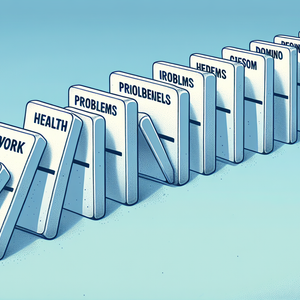The Hidden Costs of Being a High School Teacher

One of the most significant hidden costs for teachers is the expense of classroom supplies and resources. In many cases, educators are expected to provide their own materials to create an engaging learning environment. From pens and paper to laboratory equipment and technology, the costs can quickly add up. A survey conducted by the National Education Association found that, on average, teachers spend around $500 of their own money annually on classroom supplies. This figure can be even higher for teachers in underfunded districts, where budget constraints often leave them with inadequate resources. For instance, a high school science teacher may need to purchase lab supplies for experiments or updated textbooks to ensure students have access to the latest information. The expectation for teachers to supplement their classrooms can lead to financial strain, especially when salaries do not adequately reflect the additional expenses incurred. In states where the average salary for high school teachers hovers around $60,000, the additional out-of-pocket expenses can represent a significant percentage of their income, further complicating their financial situation.
Professional Development Costs
In addition to classroom supplies, teachers are often encouraged to pursue professional development opportunities to enhance their skills and stay current with educational practices. While these opportunities can be beneficial for both teachers and students, they often come at a cost. Workshops, conferences, and online courses can require significant financial investment, with some teachers spending thousands of dollars to meet licensing requirements or to gain new certifications. For example, a teacher looking to specialize in special education may need to enroll in a series of courses that not only require tuition fees but also travel expenses if the courses are held out of town. Furthermore, with many schools offering limited funding for professional development, teachers may find themselves footing the bill for their own growth, which can create additional financial burdens. A report from the Learning Policy Institute indicated that teachers who invest in professional development see improved student outcomes, yet the costs often outweigh the benefits when teachers are left to cover expenses themselves.
Personal Time Dedicated to Student Support
Beyond monetary costs, teachers also invest considerable personal time in supporting their students. This commitment often translates into long hours spent grading papers, planning lessons, and providing extra help to students who need it. According to a report from the American Federation of Teachers, teachers work an average of 54 hours per week, far exceeding the standard 40-hour workweek. While this dedication is commendable, it can lead to burnout and make it challenging for teachers to maintain a work-life balance. Moreover, many teachers feel a moral obligation to go above and beyond for their students, which can include organizing extracurricular activities, tutoring sessions, or mentoring programs. This investment of time, while rewarding in terms of student outcomes, can take a toll on teachers’ personal lives and overall well-being. A study from the Center for American Progress found that teacher burnout is a significant issue, with 40% of teachers considering leaving the profession due to stress and workload, illustrating the unsustainable nature of their commitments.
The hidden costs of being a high school teacher reveal a complex financial landscape that many educators navigate daily. From classroom supplies and professional development to the personal time dedicated to student support, these expenses can significantly impact teachers' take-home pay and overall job satisfaction. As society continues to advocate for the importance of education, it is crucial to recognize and address the challenges that teachers face beyond their salaries. By shedding light on these hidden costs, we can foster a deeper understanding of the teaching profession and work towards creating a more supportive environment for educators. Addressing these issues not only benefits teachers but ultimately enhances the educational experience for students, fostering a healthier and more effective learning environment.
Educational Consultant
Education non-profits, school districts, educational technology companies, McKinsey & Company, Pearson
Core Responsibilities
Advise schools on curriculum development and teaching strategies to enhance student learning outcomes.
Conduct workshops and training sessions for teachers to improve instructional techniques and classroom management.
Analyze educational data to identify areas for improvement and implement effective interventions.
Required Skills
Strong understanding of educational theories and pedagogical practices.
Excellent communication and presentation skills for engaging educators and stakeholders.
Experience with data analysis tools and methodologies to inform decision-making.
Instructional Coordinator
School districts, state education agencies, private educational institutions
Core Responsibilities
Develop and implement educational curricula and instructional materials for teachers.
Evaluate and assess the effectiveness of instructional programs and recommend improvements.
Provide professional development training for educators on new teaching strategies and technologies.
Required Skills
Expertise in curriculum design and educational assessment.
Ability to collaborate with teachers, administrators, and educational stakeholders.
Advanced degree in education or a related field, along with teaching experience.
Special Education Teacher
Public and private schools, special education centers, alternative education programs
Core Responsibilities
Create individualized education plans (IEPs) tailored to meet the unique needs of students with disabilities.
Implement specialized instructional strategies and adaptations to promote student learning and participation.
Collaborate with parents, teachers, and support staff to provide comprehensive support for students.
Required Skills
Certification in special education and knowledge of various disabilities and learning challenges.
Patience, empathy, and strong interpersonal skills to build relationships with students and their families.
Familiarity with assistive technologies and adaptive teaching methods.
School Administrator (Principal)
K-12 public and private schools, charter schools, educational organizations
Core Responsibilities
Oversee the daily operations of a school, including staff management, budgeting, and student discipline.
Foster a positive school culture by promoting collaboration, inclusion, and high academic standards.
Implement school-wide initiatives to improve educational outcomes and student engagement.
Required Skills
Proven leadership and management skills, with a focus on educational administration.
Strong problem-solving abilities and experience with conflict resolution.
Advanced degree in educational leadership or administration, along with teaching experience.
Curriculum Developer (K-12)
Educational publishing companies, school districts, educational non-profits, Scholastic, Houghton Mifflin Harcourt
Core Responsibilities
Design and develop engaging and effective curriculum materials aligned with educational standards.
Collaborate with educators to gather feedback and ensure materials meet the needs of diverse learners.
Evaluate the effectiveness of curriculum materials through pilot testing and student performance data.
Required Skills
Strong knowledge of subject content and instructional design principles.
Creativity and innovation in developing learning resources and assessments.
Experience with educational technology tools for curriculum development.


